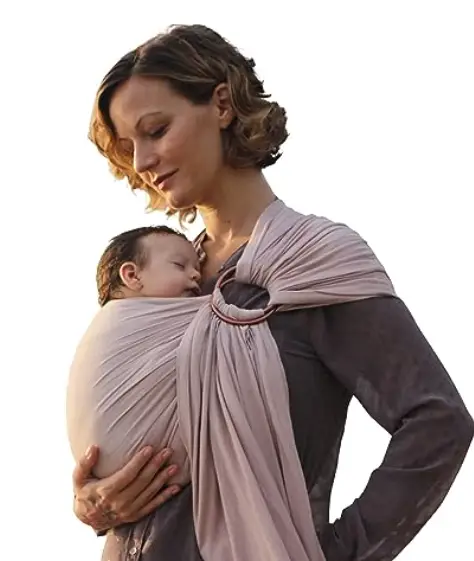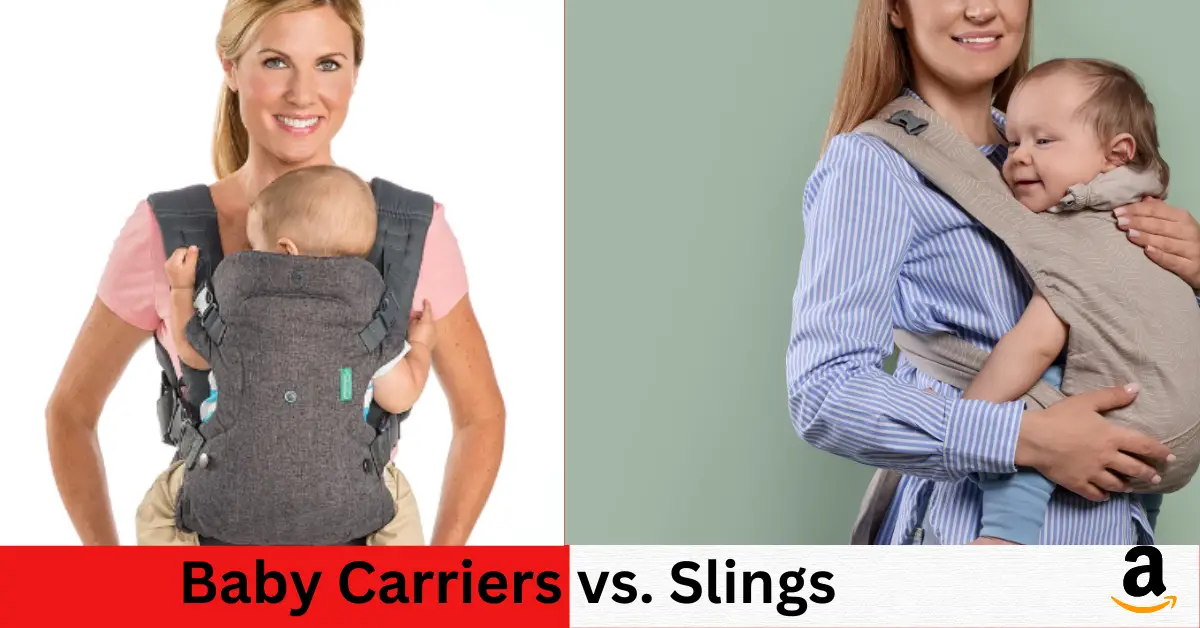Beco Baby Carrier Toddler Carrier with Extra Wide Seat - Toddler Carrying Backpack Style and Front-Carry - Lightweight & Breathable Child Carrier - Toddler Sling Carrier 20-60 lbs (Cool Dark Grey)
$99.99 (as of April 30, 2024 05:33 GMT +00:00 - More infoProduct prices and availability are accurate as of the date/time indicated and are subject to change. Any price and availability information displayed on [relevant Amazon Site(s), as applicable] at the time of purchase will apply to the purchase of this product.)As a devoted parent, you understand the paramount importance of ensuring the safety and comfort of your precious child. When considering methods of transporting your infant, two main options come to the forefront: baby carriers and slings. In this comprehensive guide, we will delve into the realm of baby carriers and slings, meticulously examining their attributes, benefits, and essential considerations. This comprehensive information aims to empower you in making an informed choice that aligns seamlessly with your daily routine and addresses the unique requirements of your baby.
Introduction
Across generations, the longstanding practice of baby-wearing has cultivated a deep bond between parents and their newborns. In today’s era, as parents embrace contemporary approaches, you’re offered a diverse range of baby-wearing possibilities, each carrying its own distinct advantages. Among these options, two favorites emerge: baby carriers and slings. These ingenious designs aim to cradle your baby comfortably while enabling you to smoothly carry on with your everyday tasks.
Understanding Baby Carriers
Types of Baby Carriers
Baby carriers come in various styles, including soft-structured carriers, wraps, and meh dais. Soft-structured carriers provide excellent support and are known for their ease of use. Wraps offer versatility, allowing you to adjust the fit to your comfort, while meh dais combines the best of both worlds with their hybrid design.
Benefits of Baby Carriers
Baby carriers distribute the baby’s weight evenly across your body, reducing strain on your shoulders and back. They offer hands-free convenience, enabling you to perform tasks while keeping your baby close. Moreover, many carriers feature ergonomic designs that promote healthy hip and spine development.
Factors to Consider When Choosing a Baby Carrier
When you’re in the process of choosing a baby carrier, it’s important to take several factors into account. These include the age of your baby, your own comfort, and how user-friendly the carrier is. Keep an eye out for crucial attributes such as adjustable straps, adequate head and neck support, and breathable fabrics. These elements play a pivotal role in ensuring a safe and comfortable experience for both you and your little one.
Our Picks of Top Baby Carriers And Baby Slings
Ergobaby Omni Breeze Carrier

Introducing the Ergobaby Omni Breeze All Carry Positions Baby Carrier, a game-changer in babywearing designed to provide optimal comfort and flexibility. Rated as the #1 choice for airflow, this carrier is crafted with innovative SoftFlex Mesh to ensure a refreshing breeze for both you and your little one, making it the perfect companion for outdoor adventures, travel, or leisurely getaways. From newborn to toddler (~0-48 months; 7-45lbs), the Omni Breeze grows with your baby, remaining an essential partner throughout every stage of their growth.
Nalakai Ring Sling

Discover the Nalakai Ring Sling, formerly known as Pura Vida Slings, offering the same luxury and choice with 20 stunning colored fabrics. Carry your precious little one close to your heart while enjoying comfort and style with our baby slings. This sling creates a profound, nurturing bond, enveloping your baby in a loving embrace that fosters trust and belonging. It mimics the natural, womb-like position, forging an intimate connection between you both. Even colicky babies find solace in this soft baby sling, drifting to sleep with ease.
Exploring Baby Slings
Types of Baby Slings
Baby slings, often made from cloth or woven fabric, are available in ring slings and pouch slings. Ring slings provide adjustability and are ideal for quick trips, while pouch slings offer simplicity and are great for newborns.
Advantages of Baby Slings
Baby slings create a cozy environment for your baby, allowing them to be held in a natural position close to your body. The snugness of a sling mimics the feeling of being in the womb, providing comfort and security. Slings are particularly useful for breastfeeding on the go.
Points to Consider When Selecting a Baby Sling
When choosing a baby sling, consider factors such as material breathability, adjustability, and ease of use. It’s important to ensure proper positioning to support your baby’s head and neck.
The Key Differences
Structure and Design
Baby carriers offer structured support with adjustable straps and buckles, catering to parents who prefer a more secure setup. On the other hand, baby slings provide a wrap-around design that can be adjusted to your comfort level.
Comfort and Support
Carriers distribute weight across your shoulders, back, and hips, making them comfortable for extended wear. Slings focus the weight on one shoulder, which might be less suitable for longer durations.
Ease of Use
Carriers tend to have a learning curve due to their multiple adjustment points. Slings are relatively easier to use, making them a quick solution for busy parents.
Versatility
Carriers often come with various carrying positions, accommodating the baby’s growth stages. Slings offer versatility in terms of breastfeeding on the go and quick adjustments.
Making the Right Choice
The choice between a baby carrier and a sling depends on various factors.
Your Lifestyle and Activities
Consider your daily routine and the activities you’ll engage in while baby-wearing. If you’re active and on the move, a carrier might be more suitable. If you value simplicity and quick adjustments, a sling could be the way to go.
Baby’s Age and Development
Newborns and infants might benefit from the snugness of a sling, while older babies might enjoy the versatility of a carrier’s different carrying positions.
Personal Comfort and Preference
Try out both options to see which one feels more comfortable for you. Your own comfort and confidence in using the chosen baby-wearing method are crucial.
Conclusion
In the realm of baby-wearing, both carriers and slings offer valuable benefits. Baby carriers provide structured support and versatility, while slings offer snugness and simplicity. Your choice should be based on your lifestyle, your baby’s needs, and your personal comfort.
FAQs
Q: Can I breastfeed while using a baby carrier or sling?
A: Yes, many carriers and slings are designed to facilitate breastfeeding on the go.
Q: Are baby carriers and slings suitable for newborns?
A: Yes, both options can be used for newborns, but slings provide a cozier fit.
Q: How do I ensure proper safety while using a baby carrier or sling?
A: Follow the manufacturer’s guidelines, ensure proper positioning, and regularly check for any signs of discomfort.












